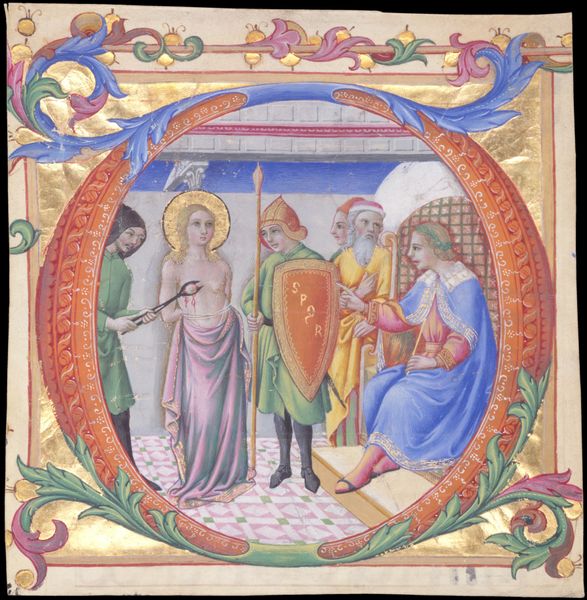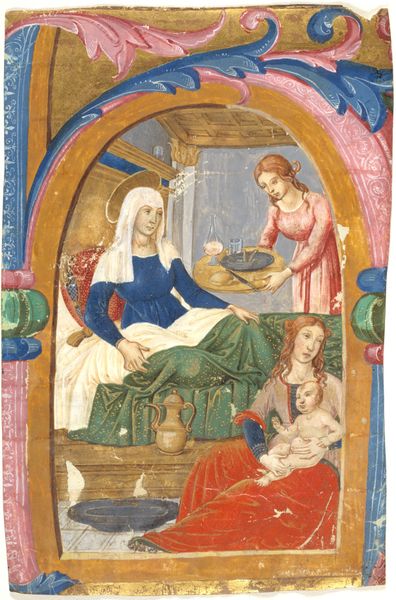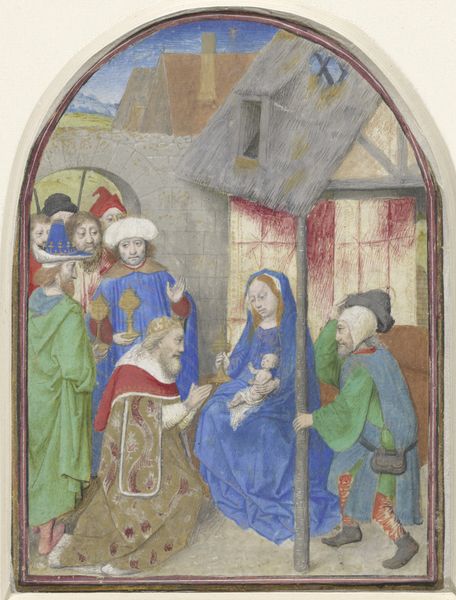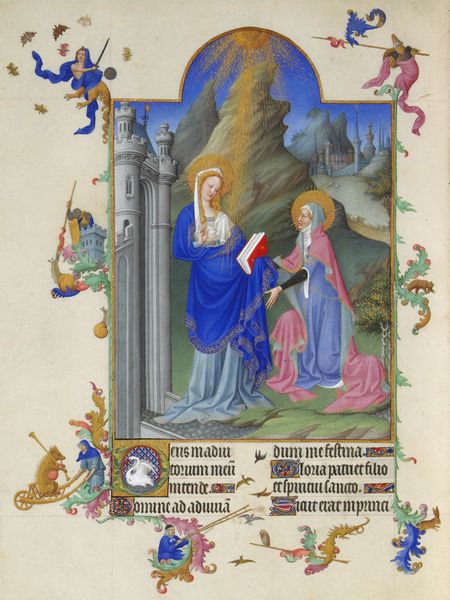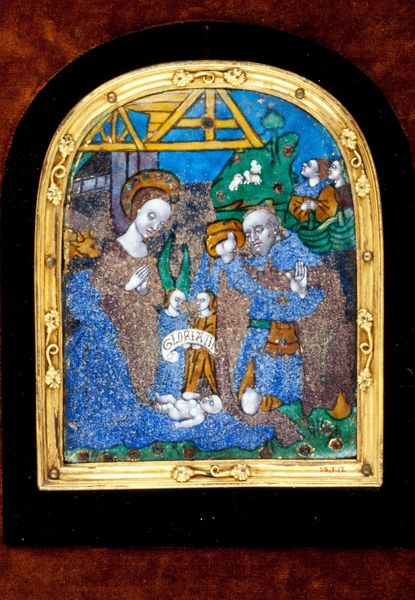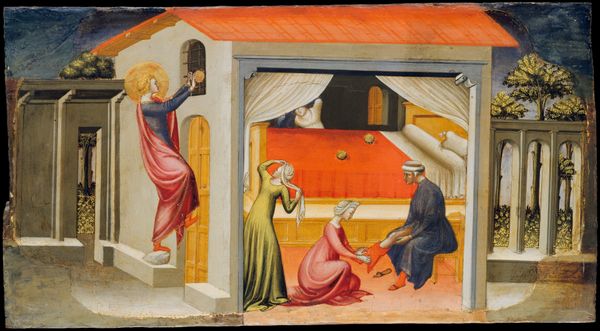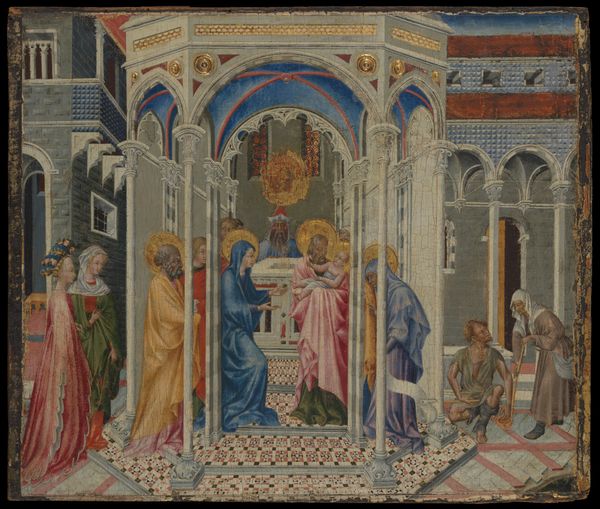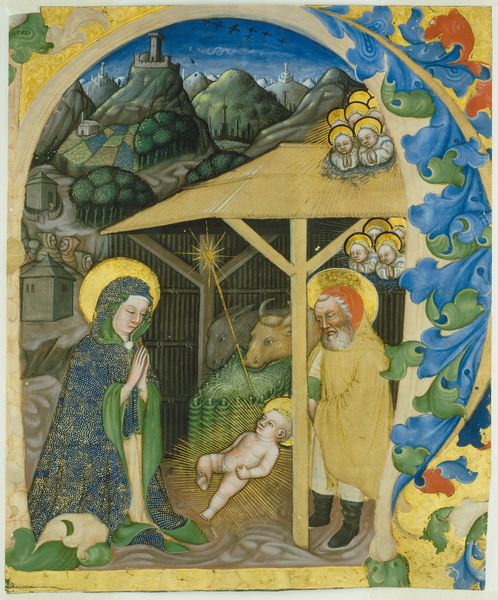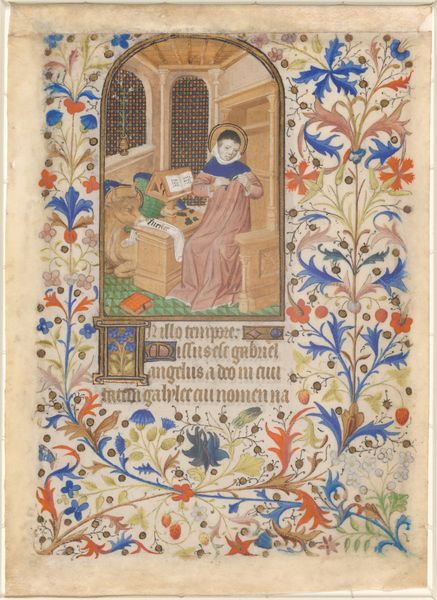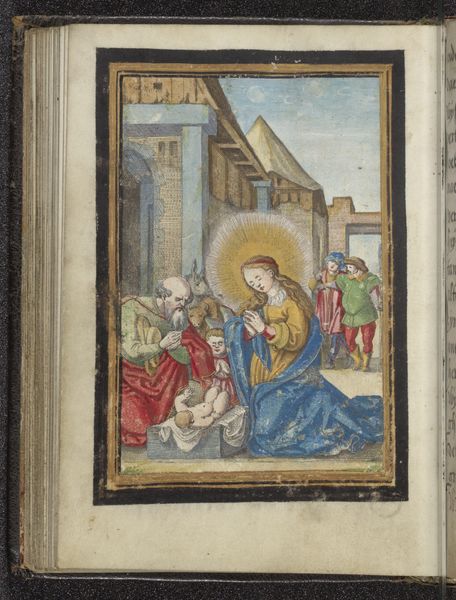
Manuscript Illumination with the Birth of the Virgin in an Initial G, from a Gradual 1375
0:00
0:00
tempera, painting
#
medieval
#
narrative-art
#
tempera
#
painting
#
figuration
#
history-painting
#
international-gothic
#
academic-art
#
decorative-art
#
medieval-art
#
decorative art
#
miniature
Dimensions: Overall: 11 1/2 x 11 3/4 in. (29.2 x 29.8 cm) Mat Size: 22 x 16 in. (55.9 x 40.6 cm)
Copyright: Public Domain
Curator: Let's turn our attention to this striking miniature painting: Manuscript Illumination with the Birth of the Virgin in an Initial G, created around 1375 by Don Silvestro de' Gherarducci. Editor: It has a peaceful sort of intensity. I am immediately drawn to the way the artist plays with domestic space—the intimacy of the birth juxtaposed with this ornate initial “G,” bursting with lush foliate patterns. It speaks to the complicated status of women in the religious and political imagination of the 14th century. Curator: Indeed. As an illumination within a Gradual, this work served a functional purpose in the liturgy. The International Gothic style, seen here in the delicate figures and lavish use of gold leaf, brought a certain prestige and refinement to religious texts and rituals. The Church and wealthy families alike prized these beautiful, hand-painted volumes. Editor: Absolutely, and it is fascinating to consider the hierarchies at play. The immaculate space, rich colors and gold embellishments are obviously there to showcase this sacred event as worthy of display and reverence. It serves a religious and ideological function to control the narrative surrounding women and childbirth. Curator: Observe the depiction of Saint Anne reclining after childbirth and the midwives carefully tending to the infant Mary. This scene emphasizes the humanity of the Virgin, making her more relatable to the viewers. This piece would have certainly played a crucial role in reinforcing established social and spiritual roles during the late Medieval period. Editor: And not just established social roles, but, I think, carefully constructed ones, designed to celebrate this ideal of submissive female virtue through this visual demonstration. Still, as a site of female community, it might also gesture at a quieter form of power that women experienced amongst themselves. Curator: That’s a fascinating point. And thinking about where it’s displayed now – in a museum setting like the Metropolitan Museum of Art – this artwork continues to serve a role in our society, telling a particular story about the past and about art history itself. Editor: Exactly. An artwork’s meanings and its reception continually change over time. And even now, as a twenty-first century viewer, grappling with its implications is, in some small way, activating that historical struggle. Curator: So well put! Reflecting on the intricate details, from its vibrant palette to its historical context, one gains new insights into the multilayered nature of religious art and its function within culture. Editor: Precisely, and considering that, alongside the enduring issues of its history, we are able to bring new ways of seeing to this illumination; which ensures that, however aged, it never becomes simply "history."
Comments
No comments
Be the first to comment and join the conversation on the ultimate creative platform.
